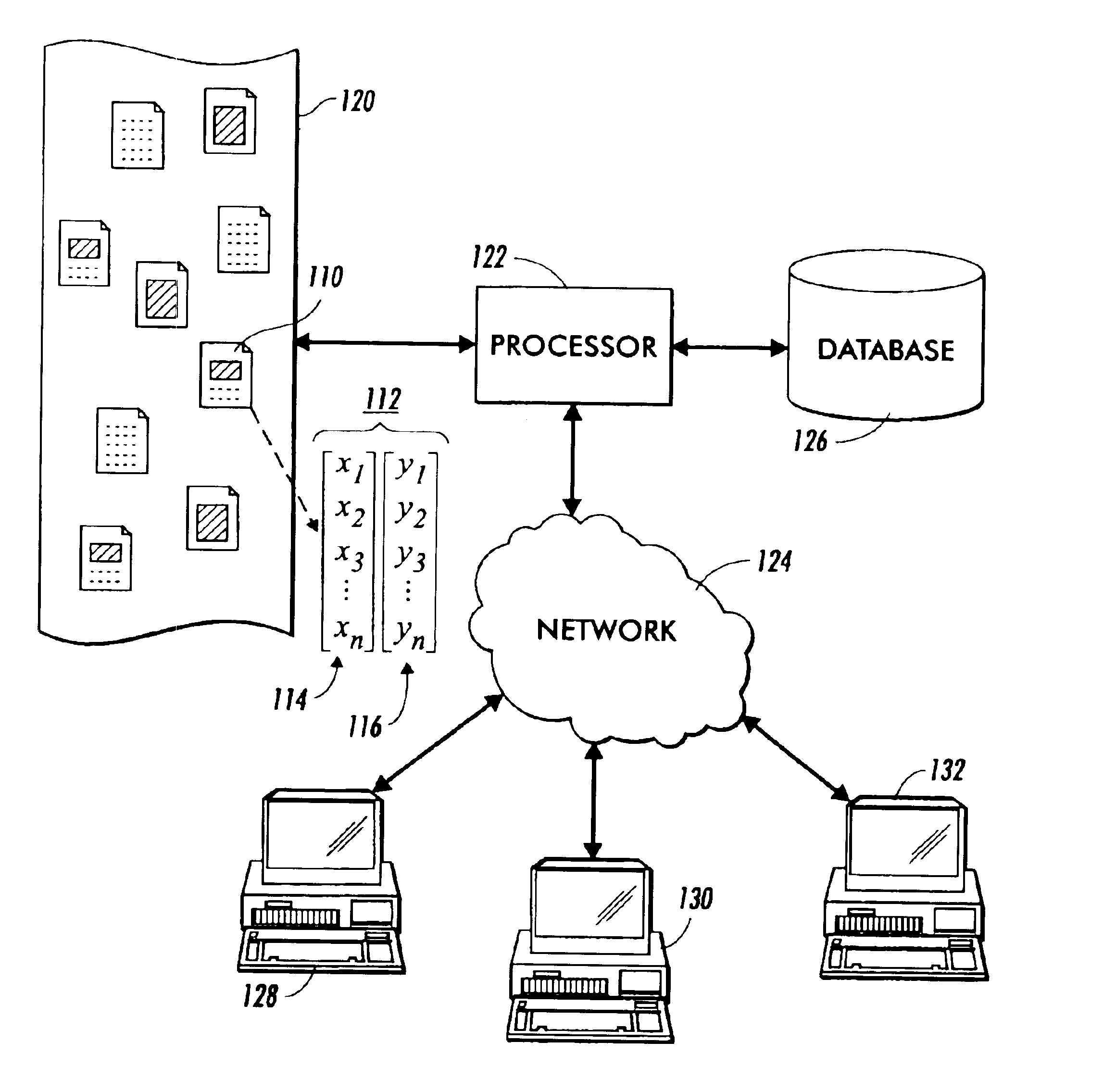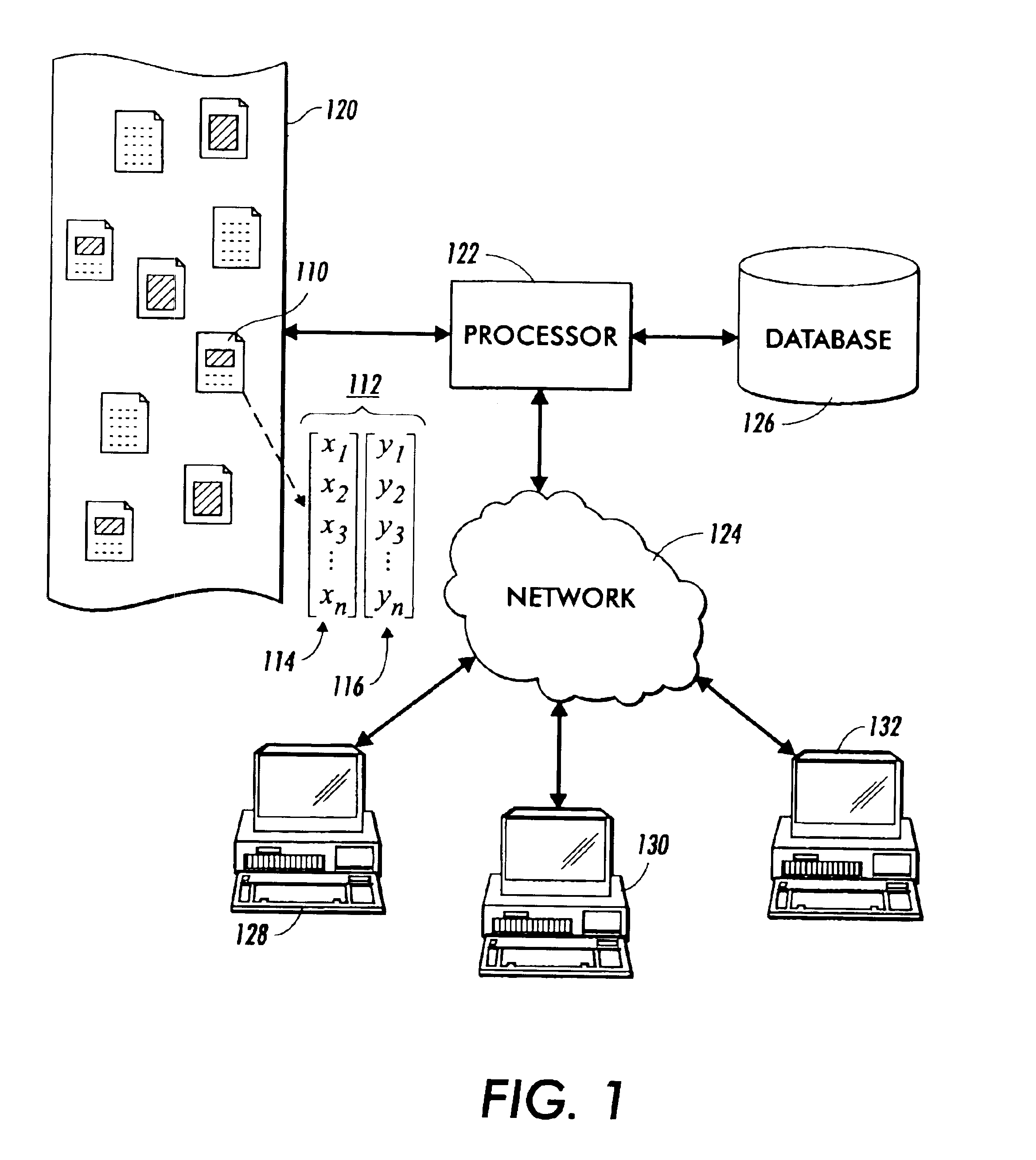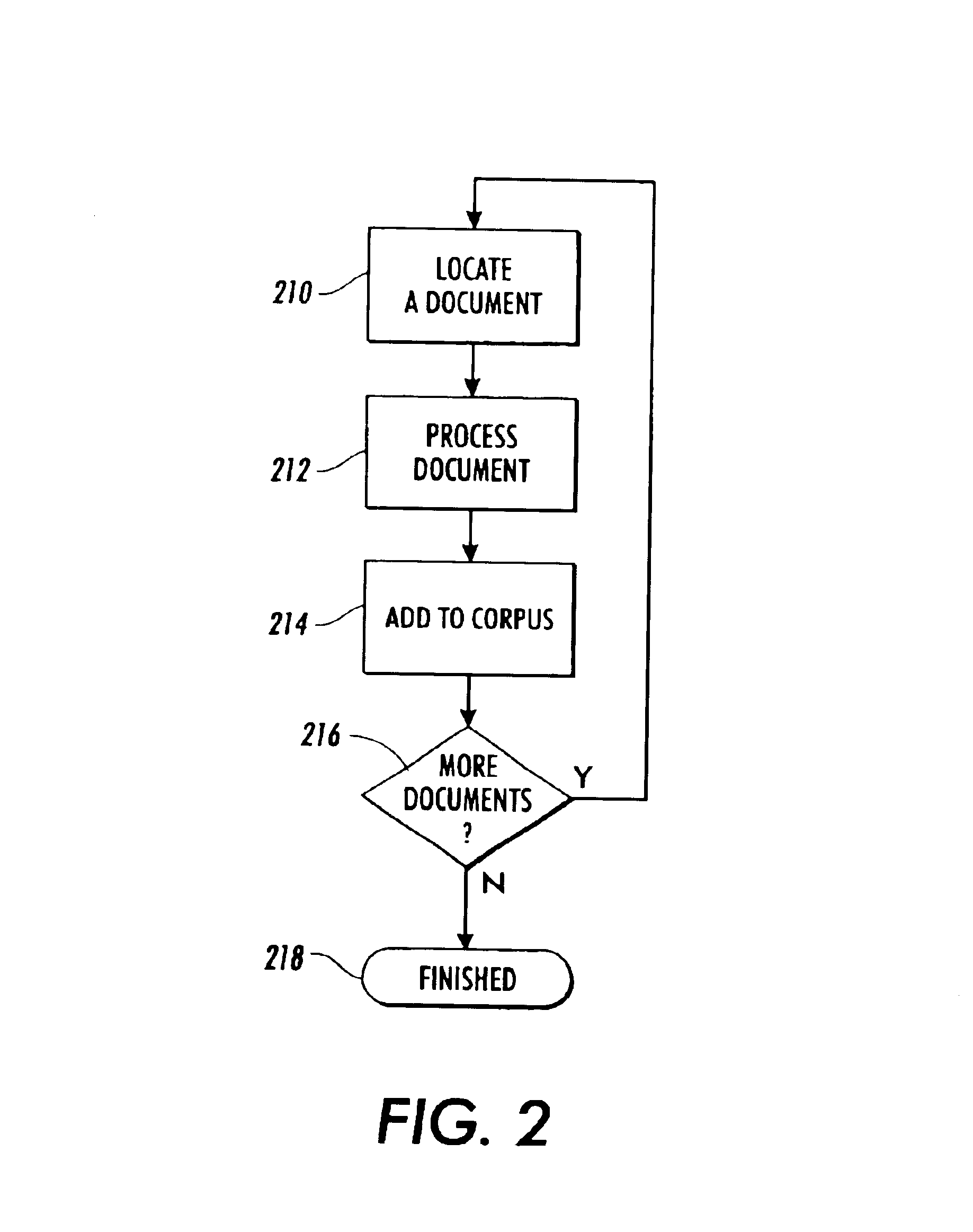System and method for quantitatively representing data objects in vector space
a data object and vector space technology, applied in the field of information storage and retrieval, can solve the problems of user difficulty in navigating document collections, user inability to remember a url for each and every document on the internet, and the document collection indexing of the web and intranet repositories is not very well indexed, so as to achieve the effect of convenient operation
- Summary
- Abstract
- Description
- Claims
- Application Information
AI Technical Summary
Benefits of technology
Problems solved by technology
Method used
Image
Examples
Embodiment Construction
[0076]The invention is described below, with reference to detailed illustrative embodiments. It will be apparent that the invention can be embodied in a wide variety of forms, some of which may be quite different from those of the disclosed embodiments. Consequently, the specific structural and functional details disclosed herein are merely representative and do not limit the scope of the invention.
[0077]The ability of the system and method of the present invention to efficiently browse and search upon documents in a collection, as described in general terms above, is highly dependent on the existence of a consistent data representation model. Specifically, in order to define a quantitative similarity metric between documents, it has been found useful to map documents into multi-dimensional vector spaces. Accordingly, the approach set forth herein defines a data representation model for all modalities, wherein each document is represented as a vector in Rn. This model is best illust...
PUM
 Login to View More
Login to View More Abstract
Description
Claims
Application Information
 Login to View More
Login to View More - R&D
- Intellectual Property
- Life Sciences
- Materials
- Tech Scout
- Unparalleled Data Quality
- Higher Quality Content
- 60% Fewer Hallucinations
Browse by: Latest US Patents, China's latest patents, Technical Efficacy Thesaurus, Application Domain, Technology Topic, Popular Technical Reports.
© 2025 PatSnap. All rights reserved.Legal|Privacy policy|Modern Slavery Act Transparency Statement|Sitemap|About US| Contact US: help@patsnap.com



